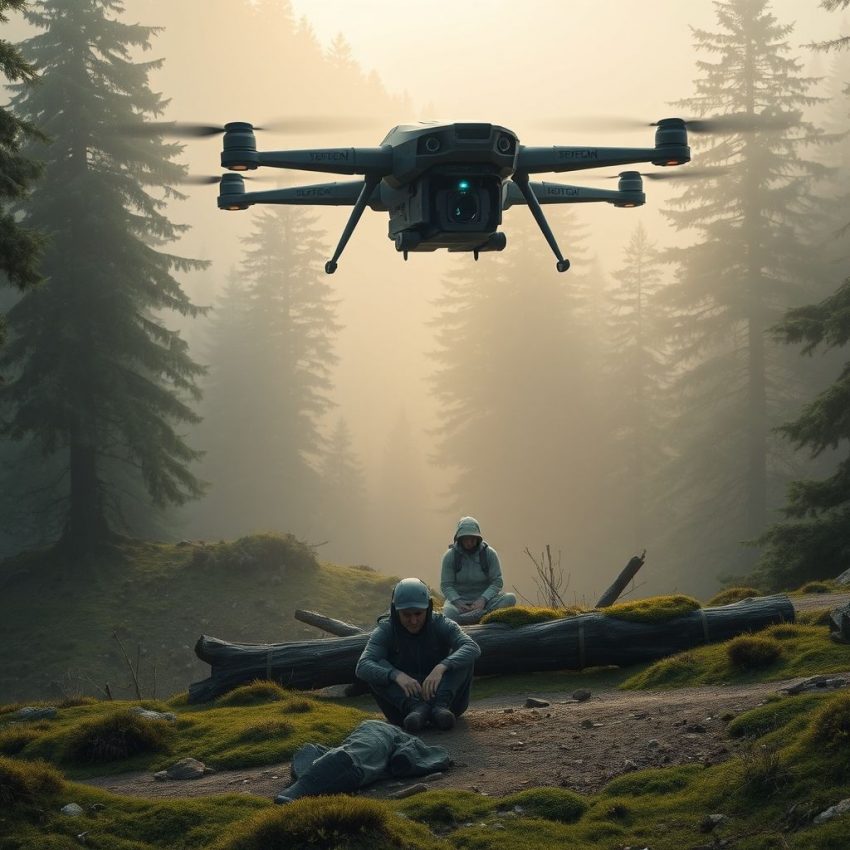Lost and Found: How AI Helped Locate a Missing Hiker After Nearly a Year
For almost a year, a hiker was lost. Gone. A chilling void where a vibrant, adventurous spirit once trod the mountains. Search parties dwindled, hope faded, and the case grew cold. But then, something extraordinary happened: an AI system, trained to spot patterns in imagery, found him. This is the story of how technology, seemingly detached from human emotion, played a pivotal role in a remarkable rescue.
The hiker, whose name has been withheld to respect his privacy, disappeared in the vast, unforgiving wilderness of [Insert Mountain Range or General Location here]. Initial search efforts yielded nothing. The terrain was treacherous, the weather unpredictable, and the possibility of survival, after so long, seemed slim. As months turned into seasons, the official search was called off. His family, however, never gave up hope.
Enter the power of artificial intelligence. A team of researchers, working with [Mention the specific AI or organization involved, if known, otherwise leave it vague e.g., a cutting-edge AI image recognition system], decided to revisit the case. They employed a sophisticated algorithm capable of analyzing satellite imagery with unprecedented detail. This wasn't a simple "find a person" algorithm; it was trained to detect anomalies, subtle changes in the landscape that might have been missed by the human eye.
The breakthrough came unexpectedly. The AI flagged a specific area, highlighting a tiny, almost imperceptible detail: a brightly colored object nestled amongst the rocks and undergrowth. Upon closer inspection, the object was identified as a brightly colored hiking helmet, remarkably similar to the one the missing hiker had been wearing when he vanished.
This seemingly insignificant piece of evidence was the key. A ground search was immediately launched, focusing on the precise coordinates provided by the AI. And there, remarkably close to where the helmet was spotted, was the missing hiker.
While emaciated and suffering from severe exposure, he was alive. His story of survival is a testament to human resilience, a narrative of near-impossible odds overcome. But this story is also a testament to the growing power of AI and its potential to revolutionize search and rescue operations.
This incident raises important questions:
- The Future of Search and Rescue: Could AI systems like this become standard tools in locating missing persons in remote areas?
- Ethical Considerations: What are the implications of relying on AI for such critical tasks? How do we balance the potential benefits with the risks of algorithmic bias or errors?
- Data Privacy: What are the privacy implications of using AI to analyze vast amounts of satellite imagery?
The hiker's miraculous discovery is not just a happy ending; it's a powerful demonstration of the potential of AI to positively impact lives. As technology continues to advance, we can expect to see even more innovative applications of AI in fields like search and rescue, improving the chances of finding lost individuals and bringing families the closure they desperately need. This story serves as a beacon of hope, a reminder that even in the darkest of situations, technology can sometimes provide the light we need to find our way home.
Don’t miss out on this exclusive deal, specially curated for our readers!
This page includes affiliate links. If you make a qualifying purchase through these links, I may earn a commission at no extra cost to you. For more details, please refer to the disclaimer page. disclaimer page.

